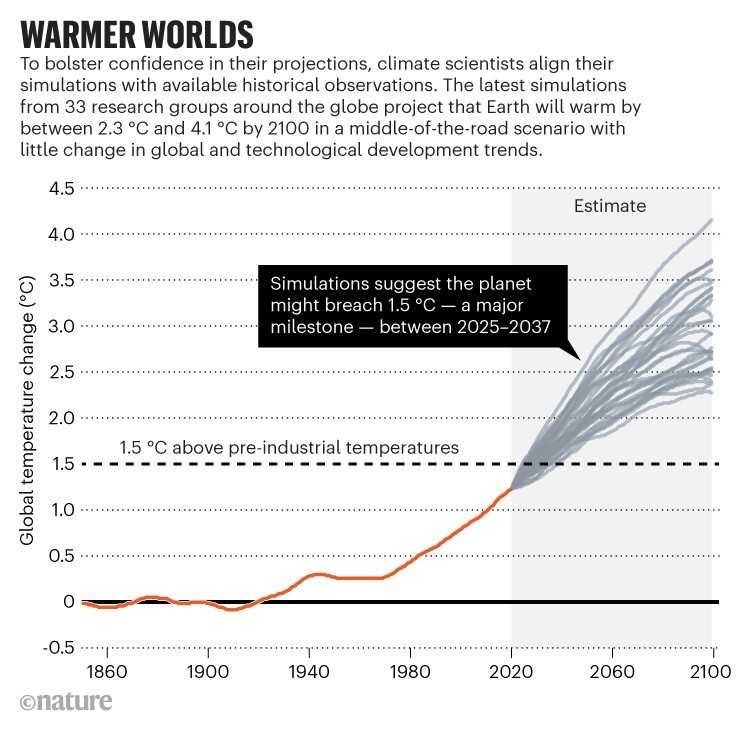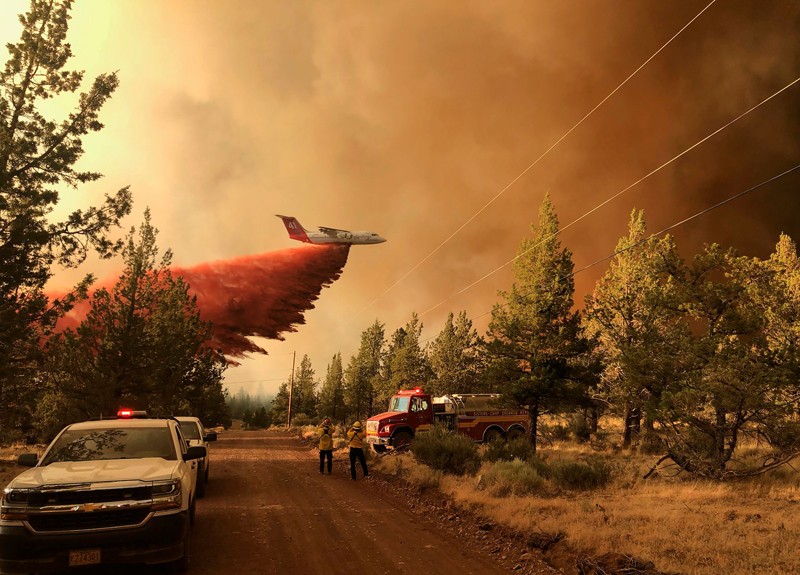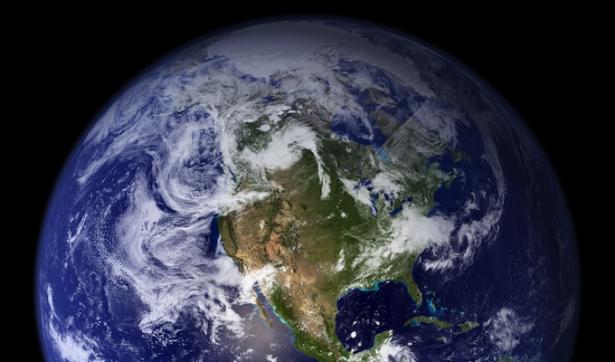The United Nations is poised to release the most confident and comprehensive assessment yet of global warming, including detailed estimates of how continued greenhouse-gas emissions will increase Earth’s sea levels and drive extreme weather in the coming years. Compiled by more than 200 scientists and approved by government representatives from 195 countries, the report from the Intergovernmental Panel on Climate Change (IPCC) will leave little doubt that humans are altering the way the planet functions — and that things will get much worse if governments do not take drastic action, say climate researchers interviewed by Nature.
Many hope that the report, which covers the latest advances in climate science, will galvanize action at the UN climate summit in Glasgow, UK, this November, where world leaders will make fresh commitments to curbing greenhouse-gas emissions. Scientists say that on the basis of current policies, governments will fail to meet the goals they set in the 2015 Paris climate accord to limit global warming to 1.5–2 °C above pre-industrial levels.
“This report will make it absolutely clear what is the state of the science, and throw the ball back in the camp of the governments for action,” says Corinne Le Quéré, a climate scientist at the University of East Anglia in Norwich, UK.
It is the first in a trio of reports that will comprise the IPCC’s sixth major climate assessment since 1990: a second report, on climate impacts and adaptation, and a third, on mitigation efforts, will follow next year. In anticipation of the first report’s release next week, Nature previews what researchers say are some of the most significant advances in climate science conducted since the last IPCC assessment eight years ago.
High confidence, hot models
After several decades of research, climate scientists have no doubt that greenhouse-gas emissions cause global temperatures to rise. Concentrations of these gases have risen by around 50% since pre-industrial times, and the planet has warmed by more than 1 °C (see ‘Warmer worlds’). By some estimates, the world is on track for nearly 3 °C of warming unless governments do more to curb these emissions.
Researchers have grown more confident in such projections as climate science has advanced — a point that the IPCC report will emphasize. One way in which scientists have assessed their climate projections is through a metric known as climate sensitivity. This is a measure of the projected long-term warming that would occur if the planet’s atmospheric carbon dioxide (CO2) levels doubled compared with pre-industrial levels. Despite advances in understanding and computing power, estimates of climate sensitivity have been stuck at around 1.5–4.5 °C since the 1970s. Recent efforts to narrow that range have significantly boosted scientists’ trust in projections of how quickly the world might warm in the coming decades.

Source: Zeke Hausfather/Coupled Model Intercomparison Project Phase 6
In a study published in July 20201, for instance, a team of researchers challenged climate models with multiple lines of evidence, including contemporary climate records and evidence from ancient climates. They determined a likely climate sensitivity of 2.6–3.9 °C.
“It sounds a little esoteric, but it would actually be a pretty big deal if the IPCC narrows the range of climate sensitivity,” says Zeke Hausfather, a co-author of the study and a climate scientist at the Breakthrough Institute in Oakland, California. Narrowing the range would help to constrain models and improve future projections.
But Hausfather is quick to note that many of the latest climate models — including those from large modelling centres in the United States and the United Kingdom — are projecting warming that is well above even the previous climate sensitivity estimates. About one-third of the roughly 40 models that have run climate-sensitivity tests predict more than 4.5 °C of warming if CO2 levels double, puzzling scientists who consider such extreme levels of warming to be implausible given other lines of evidence.
Scientists are still working out precisely why the models are running hot, but some research suggests that part of the answer could be the use of sophisticated new representations of cloud microphysics and tiny particles in the atmosphere called aerosols. For example, earlier models featured unrealistic clouds consisting of too much ice, which would turn to water as the globe warmed. This produced a cooling effect because water-based clouds reflect more solar energy back into space. The latest models start out with more-realistic clouds that have more water, which reduces the cooling effect over time.
But that’s just one piece of a larger equation that climate scientists are still working out, says Gavin Schmidt, who heads the modelling team at NASA’s Goddard Institute for Space Studies in New York City. Some models that run hot might need to be weighted less when calculating metrics such as climate sensitivity, says Schmidt. But they could still provide useful predictions for climate variables such as precipitation patterns, he adds.
As it interprets the latest climate projections, the IPCC should recognize that scientists are only beginning to delve into these questions, says Schmidt.
Rising tides
The world got a sneak preview of how Earth’s sea levels might rise when the IPCC released a special report in 2019. The science that it presented, which will undoubtedly be included in next week’s release, experts say, pointed to average global sea levels rising by between 0.3 metres and 1.1 metres by 2100, depending on greenhouse-gas emissions. That is only slightly higher than previous projections, but the report also cited recent studies analysing the opinions of experts in the field, who declared that a 2-metre rise cannot be ruled out. Such an extreme change could displace tens of millions of people from their homes in low-lying regions.
Pinning down sea-level rise is difficult because it depends on complex questions about whether ice sheets on Greenland and Antarctica will collapse — and, if so, how fast. Scientists have made notable progress, however, in understanding how rising tides could affect communities on a local and regional, rather than just a global, scale since the last major IPCC climate assessment in 2013. This is important because different cities, countries and regions will experience sea-level rise in very different ways, says Michael Oppenheimer, a climate scientist at Princeton University in New Jersey who was an author of the special IPCC report.
For instance, the ice sheets on Greenland and Antarctica are so large that they exert a gravitational effect that causes the oceans to swell around them. When some of the ice melts, the local swelling subsides and the water redistributes elsewhere, such as to the northeastern United States — leading to rising sea levels there.
“It’s the first time the IPCC has done a comprehensive analysis of all of these local and regional effects,” Oppenheimer says. The information is important, he says, because even seemingly small increases in local sea levels can have significant impacts — particularly on flooding during storms. In many areas around the world, Oppenheimer adds, once-in-a-century floods will become annual events by the end of the century, even under the most optimistic climate scenarios.
The attribution of extremes
Next week’s IPCC report comes on the heels of epic flooding in Germany, in July, and a June heatwave that baked the US Pacific Northwest and western Canada, where the town of Lytton recorded a record temperature of 49.6 °C before a wildfire nearly razed it to the ground. Shortly afterwards, climate scientists assessed the heatwave and concluded that global warming was almost certainly a driver, and had increased the likelihood of such an event by a factor of 150 since the end of the nineteenth century.

Wildfires are becoming more frequent in Oregon and other parts of the Pacific Northwest. Credit: Oregon Department of Forestry/AP/Shutterstock
As little as a decade ago, scientists tended to demur when asked about the link between global warming and any single extreme climate event, except to say that we should expect more of them as the climate warms. But the science of climate attribution has advanced considerably in recent years, says Sonia Seneviratne, a climate scientist at the Swiss Federal Institute of Technology in Zurich. So, even though the recent heatwave analysis won’t be included in the new IPCC report because it wasn’t published in time, a substantial body of research on extreme weather exists for the IPCC to assess, says Seneviratne.
Two things have happened to drive this change. The first is that climate scientists have developed improved models and statistical methods for determining the likelihood that any given climate event could occur, either with or without human-induced climate change. But just as important, Seneviratne says, climate change itself is advancing, and recent studies show that increasingly extreme weather events are now emerging above the noise of natural variability.
Or, in the words of Le Quéré, we can now see the impacts of global warming “with our own eyes”.
doi: https://doi.org/10.1038/d41586-021-02150-0
References
- 1.
Sherwood, S. C. et al. Rev. Geophys. https://doi.org/10.1029/2019RG000678 (2020).
Jeff Tollefson is a correspondent at Nature covering energy, environment and increasingly development, or pretty much anything under the sun. He came to Nature from Congressional Quarterly, where he covered energy, climate and the environment for two years. Before that he was a Knight fellow in science journalism at MIT; a science reporter at the Santa Fe New Mexican, where he covered Los Alamos and the national labs among other topics; and a general assignment reporter at the Billings Gazette for which he covered Yellowstone National Park. Jeff has won a number of accolades, including New Mexico press awards for pieces on pollution and nuclear-weapons work at Los Alamos National Laboratory. He is originally from Wyoming and has studied French, Russian and Portuguese.


Spread the word